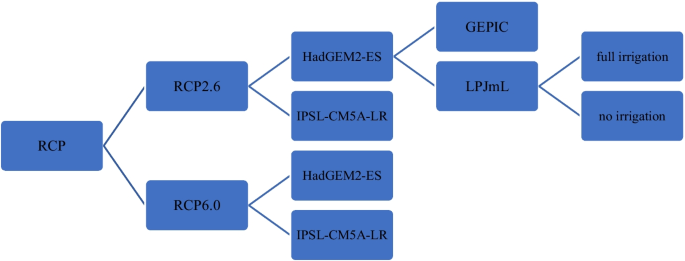评估受气候变化影响的人口:全球背景下对非洲的关注
IF 2.5
3区 社会学
Q1 DEMOGRAPHY
引用次数: 0
摘要
最近关于人口动态和气候变化的争论凸显了评估和量化人口脆弱性差异的重要性,并在考虑气候变化对不同社区和地区的潜在影响时采取前瞻性的方式。在本文中,我们叠加了基于共享社会经济路径的人口预测和来自代表性集中路径的气候变化预测。我们关注的是未来可能最容易受到气候变化影响的人群,即在相对全球背景下的非洲人口。首先,我们估计了生活在农村地区的人口比例,他们将更加依赖农业,因为农业是受气候变化影响最大的经济部门之一。其次,我们探讨了气候变化如何恶化生活在贫困线以下的人口的状况。最后,我们考虑了低教育水平,这是限制人们适应日益不利的气候环境的能力的进一步因素。我们对人口、农业和环境变化的文献贡献是双重的。首先,从农业产量下降的角度,通过绘制受气候变化影响的潜在人群地图,我们确定了脆弱地区,从而制定有针对性的战略和干预措施,以减轻影响,确保恢复力,并保护生活在受影响最严重地区的人口。其次,我们评估了当地人口脆弱性的差异,展示了非洲地区如何在本世纪末成为最容易受到气候变化影响的地区之一。调查结果支持有针对性的政策措施,以防止已经处于不利地位的人群更加脆弱。本文章由计算机程序翻译,如有差异,请以英文原文为准。

Assessing populations exposed to climate change: a focus on Africa in a global context
Abstract The recent debate on population dynamics and climate change has highlighted the importance of assessing and quantifying disparities in populations’ vulnerability and adopting a forward-looking manner when considering the potential impacts of climate change on different communities and regions. In this article, we overlay demographic projections based on the Shared Socioeconomic Pathways and climate change projections derived from the Representative Concentration Pathways. We focus on populations that are likely to be the most exposed to climate change in the future, namely, African populations in a comparative global context. First, we estimate the share of populations living in rural areas, who would be more dependent on agriculture, as one of the economic sectors mostly affected by climate change. Second, we explore how climate change would worsen the condition of populations living below the poverty line. Finally, we account for low levels of education, as further factors limiting people’s adaptation ability to increasingly adverse climate circumstances. Our contribution to the literature on population, agriculture, and environmental change is twofold. Firstly, by mapping the potential populations exposed to climate change, in terms of declining agricultural yields, we identify vulnerable areas, allowing for the development of targeted strategies and interventions to mitigate the impacts, ensure resilience, and protect the population living in the most affected areas. Secondly, we assess differentials in the vulnerability of local populations, showing how African regions would become among one of the most exposed to climate change by the end of the century. The findings support the targeting of policy measures to prevent increased vulnerability among already disadvantaged populations.
求助全文
通过发布文献求助,成功后即可免费获取论文全文。
去求助
来源期刊

Population and Environment
Multiple-
CiteScore
5.80
自引率
6.10%
发文量
18
期刊介绍:
Population & Environment is the sole social science journal focused on interdisciplinary research on social demographic aspects of environmental issues. The journal publishes cutting-edge research that contributes new insights on the complex, reciprocal links between human populations and the natural environment in all regions and countries of the world. Quantitative, qualitative or mixed methods contributions are welcome.
Disciplines commonly represented in the journal include demography, geography, sociology, human ecology, environmental economics, public health, anthropology and environmental studies. The journal publishes original research, research brief, and review articles.
 求助内容:
求助内容: 应助结果提醒方式:
应助结果提醒方式:


